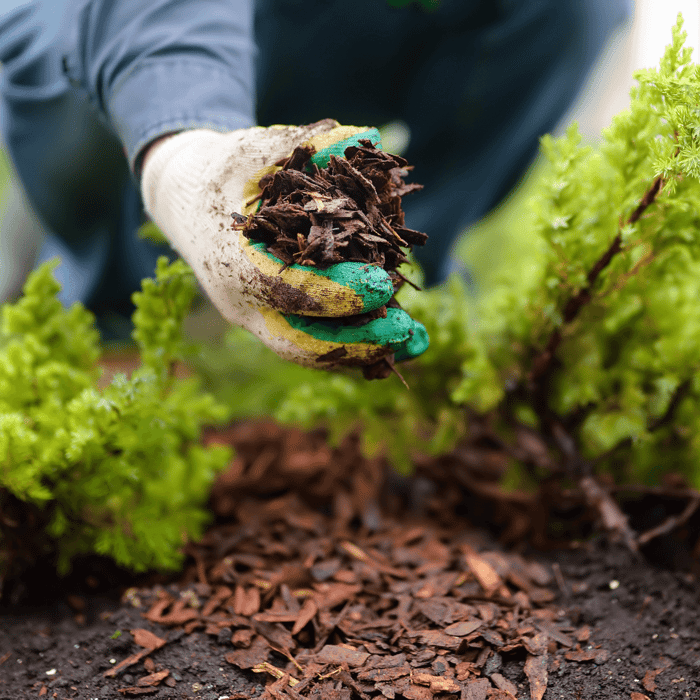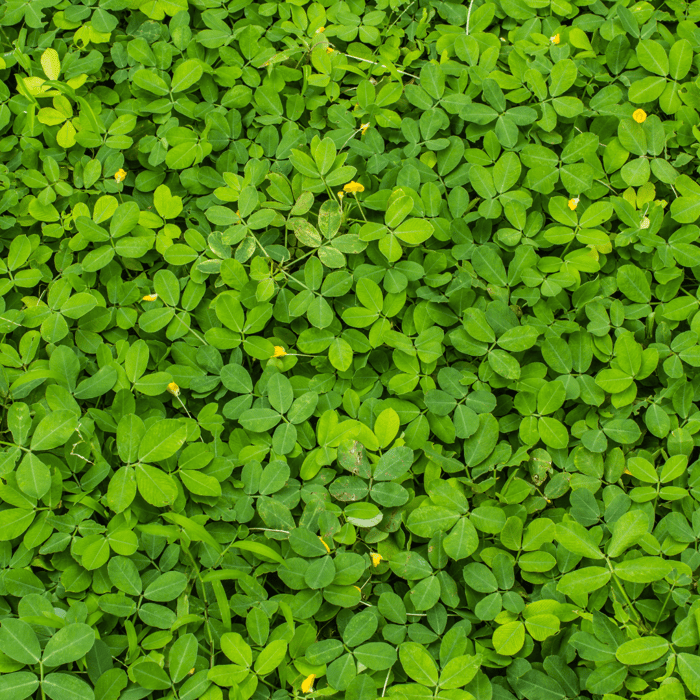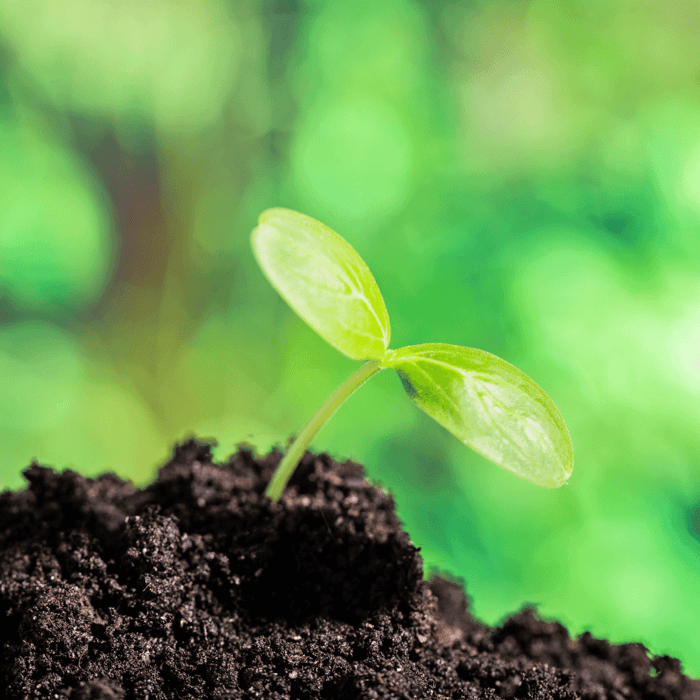Have you ever wondered why some gardens look straight out of a fairytale book while others struggle to keep even the most essential plants alive? The key might just be mulching, but what is mulching in gardening?
Mulch is a layer of organic or inorganic material placed on top of soil in garden beds. It might not sound like much, but it can transform your gardening game completely.
Defining Mulching in Gardening
Mulching refers to the process of placing a layer of material over your
garden soil. This can be done with both organic and inorganic materials.
Organic materials include leaves, grass clippings, wood chips, and straw, whereas inorganic materials include stones, gravel, and plastic. Regardless of what type is used, the primary purpose of mulch is to cover the soil surface around plants to enhance their growth and health.
The Importance of Mulching
Now that we've defined mulching, let's move on to why it's such an important
practice for gardening. First and foremost, mulch helps retain moisture around plant roots by reducing evaporation from the soil surface.
This is essential for areas that experience long dry spells or hot summers. Additionally, mulch protects roots from extreme temperatures by moderating soil temperature fluctuations.
But that's not all! Mulch also suppresses weed growth by blocking sunlight from reaching weed seeds that are trying to germinate underneath it.
This means less bending over digging up weeds during your precious gardening time! (but certainly not least), when organic materials are used as mulch, they decompose over time, enriching your soil with valuable nutrients as they break down – making it more fertile for future planting seasons.
Whether you're a seasoned gardener or a beginner, mulching is an essential practice that can take your gardening game to the next level. Keep reading to learn more about different types of mulch, the benefits of mulching, and how to apply it properly.
Vegetable Seed Vault Kit | 35 Variety Pack

$29.95
$49.95
Ultimate Survival Seed Vault: 16,000+ Non-GMO Heirloom Vegetable Seeds for Emergency Preparedness Introducing the Seed Vault Kit, your all-in-one solution for emergency preparedness and sustainable gardening. This premium seed kit contains over 16,000 non-GMO, Heirloom, Non-Hybrid, and Open Pollinated seeds,… read more
Types of Mulch
Mulching is integral to gardening; choosing the right mulch for your plants can make all the difference. There are two main types of mulch available: organic and inorganic. This section will discuss both types to help you decide which is best for your garden.
Organic Mulch
Organic mulches are made from natural materials that decompose over time, enriching the soil with nutrients. Some popular organic mulches include leaves, grass clippings, wood chips, bark, straw, and shredded newspaper.
Leaves are a great source of organic matter that can be easily collected from your yard during fall cleanup. They should be shredded before use to prevent matting and allow proper air circulation throughout the soil.
Grass clippings are another excellent organic mulch option that can be collected after lawn mowing. However, it's essential not to use grass clippings treated with herbicides or pesticides as they can harm your plants.
Wood chips and bark are long-lasting options that provide nutrients and help prevent weed growth. They should be aged before use to reduce the soil's nitrogen depletion risk.
Inorganic Mulch
Inorganic mulches do not decompose like organic ones but provide other benefits, such as improved drainage and aesthetics. Some common inorganic mulches include stones, gravel, and plastic sheeting. Stones and gravel come in different sizes and colors, giving an attractive appearance to garden beds while improving water drainage around plant roots.
Plastic sheeting is a popular option for weed control, but it doesn't add nutrients to the soil nor allows moisture or air exchange with plant roots, making it less desirable than other options. While inorganic options require less maintenance than organic ones, they often lack the benefits of enriching the soil and supporting healthy plant growth.
Choosing the right mulch for your garden is important as it can affect plant health and garden aesthetics. It's important to consider your garden's specific needs when choosing the type and amount of mulch. Organic or inorganic, both types of mulches have their advantages and disadvantages.
Organic options are great for improving soil health but may require more maintenance, while inorganic options are easy to maintain but lack the benefits that organic ones offer. Ultimately, it's a matter of personal choice and finding what works best for you and your garden environment.
Wildflower, Perennial, & Annual Flower Seed Kit | 35 Variety Pack
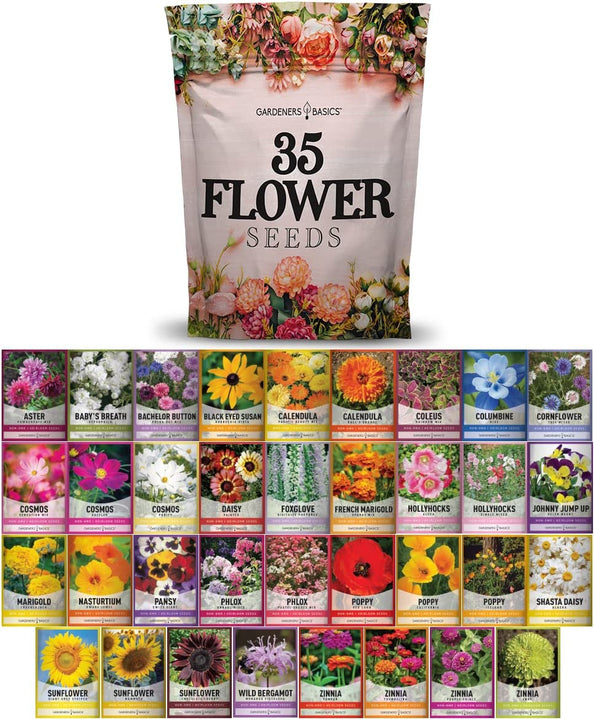
$29.95
$49.95
35 Flower Seeds Variety Pack – Heirloom, Non-Hybrid, Non-GMO, Open-Pollinated – Perfect for Pollinator-Friendly Gardens Transform your garden with our 35 Flower Seeds Variety Pack, offering a stunning and diverse selection of heirloom, non-hybrid, and non-GMO seeds. Each variety in… read more
The Benefits of Mulching
Mulching is an essential step in maintaining a healthy and vibrant garden. Besides adding a layer of aesthetic appeal, mulch provides several benefits that can help ensure your plants' longevity and growth. In this section, we'll explore some of the many advantages of mulching.
Retains Moisture in Soil
One of the most significant benefits of mulching is its ability to retain moisture in the soil. Mulch forms a protective layer over the soil that helps to reduce evaporation from the surface.
By slowing down water loss, the soil remains moist for extended periods, which is especially important during hot summer months or droughts. A moisture-rich soil environment encourages robust root development for your plants.
Additionally, it protects them from heat stress and reduces water requirements for irrigation by up to 50%. Mulch also acts as an insulator, preventing rapid temperature fluctuations that can harm plant roots.
Suppresses Weed Growth
Mulch also serves as a natural suppressant against weed growth. Mulch forms a dense layer that blocks sunlight from reaching weed seeds germinating on the soil's surface.
Without direct sunlight, weed seeds will not be able to grow effectively, which can help reduce garden maintenance time significantly. Additionally, organic mulches decompose over time, enriching the soil with nutrients your plants need while limiting weed seed germination even further.
Regulates Soil Temperature
Another benefit of mulching is its ability to regulate soil temperature effectively. During scorching summer, excess heat can cause plant roots substantial stress leading to withering or death; conversely, frosty winter temperatures may cause root damage due to freezing. Mulch helps regulate temperature swings by providing insulation throughout warm or cold seasons for your plants' root systems against weather extremes.
Adds Nutrients to Soil as it Decomposes
When organic
mulch breaks down, it adds nutrients to the soil that your plants can benefit from. As the organic matter decomposes, it releases essential minerals and nutrients into the ground that help nourish your plants and improve overall soil health.
This natural process also helps create a diverse habitat for earthworms, bacteria, and fungi within the soil. These beneficial microorganisms break down dead plant materials and convert them into rich humus, encouraging robust plant growth.
Mulching is an excellent method to maintain a beautiful and healthy garden while reducing maintenance time. Besides its aesthetic appeal, mulch provides essential benefits such as retaining moisture in the soil, suppressing weed growth, regulating temperature swings in extreme weather conditions, and adding vital nutrients to improve overall soil health. By incorporating mulching into your gardening routine, you can expect healthier plant growth with fewer pests or disease issues.
Popular Herb Seeds for Planting | 35 Variety Pack
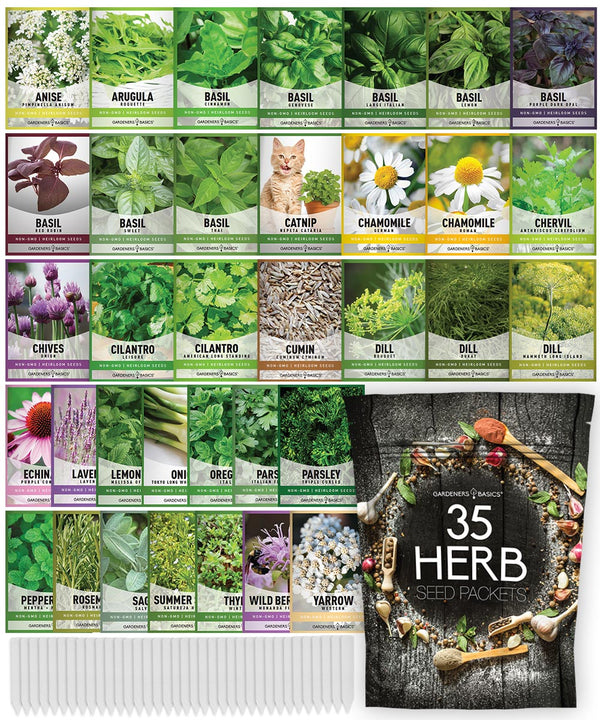
$29.95
$49.95
Heirloom, non-GMO herb seeds for indoor and outdoor home gardens! Introducing our 35 Herb Seeds Variety Pack, the ultimate selection for any herb garden enthusiast! This premium assortment includes heirloom herb seeds that are non-hybrid, open-pollinated, and non-GMO, ensuring you get only… read more
How to Apply Mulch:
Mulching is an essential part of gardening that helps keep plants healthy and thriving. Applying mulch not only adds a layer of protection to the soil but also keeps it moist, regulates temperature, and suppresses weed growth. However, when applying mulch, there are some guidelines that you need to follow to ensure that it is done correctly.
Determine the right amount of mulch for your garden
Before you apply mulch to your garden bed, it's essential to determine how much you need. Adding too little won't be as effective at retaining moisture or suppressing weeds; adding too much can suffocate your plants.
A general rule of thumb is to use around 2-3 inches of mulch for most gardens. However, this can vary depending on factors such as climate and the type of plants in your garden.
Prepare the soil before applying mulch
The next step in applying mulch is preparing the soil underneath. Remove any weeds or debris from the area before adding a layer of compost or fertilizer if necessary. Rake the area smooth so that there are no clumps or bumps on which water could pool.
It's also essential to ensure the soil isn't too dry when applying mulch. If it is too dry, water thoroughly before adding any layers so that moisture can be trapped beneath.
Spread the mulch evenly over the garden bed
Once you've determined how much and prepared your soil accordingly, it's time to spread out your chosen type of mulches evenly over your garden bed. Make sure not to pile up areas too high near stems or trunks, as this could lead to rotting caused by trapped moisture. Instead, fill a shallow basin around each plant stem with a small mulch.
It's also essential to ensure that you don't compact the mulch too much, as this could prevent moisture from getting to the soil. Gently rake or smooth mulch out over the soil until it is an even layer around 2-3 inches deep.
Applying mulch is an essential step in maintaining a healthy garden, and by following these guidelines, you can ensure that you do it correctly and effectively. By determining the right amount of mulch, preparing the soil underneath, and spreading it out evenly over your garden bed., your plants will have all they need to grow healthy and bountifully.
Gardening Gifts 70-Variety Seed Pack: 35 Herb & 35 Flower Seeds Plant Gifts For Sale
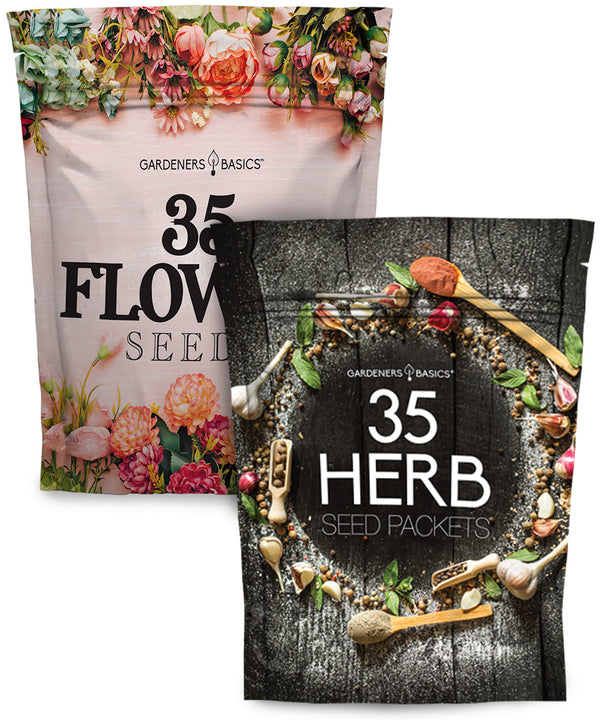
$55.95
$99.95
70-Variety Seed Pack: 35 Premium Herb Seeds & 35 Blooming Wildflower Seeds - Perfect for Gardeners & Landscaping Enthusiasts Introducing the ultimate 70-Variety Seed Pack, a complete gardening gift that brings the joys of growing right to your doorstep! Perfect… read more
Common Mistakes to Avoid While Mulching
Mulching is an essential practice in gardening that can benefit your plants by retaining moisture, regulating soil temperature, and suppressing weed growth. However, gardeners make a few common mistakes while mulching that can harm their plants instead of helping them.
Over-mulching: The Dangers of Too Much Mulch
Over-mulching is the most common mistake made by gardeners while mulching. A thick mulch may seem like a good idea, but it can suffocate your plants. Too much mulch can prevent air and water from reaching your plant's roots, leading to root rot and other issues.
To avoid over-mulching, stick to a maximum thickness of 2-3 inches across the garden bed. It's also essential to rake out any old or compacted mulch before you add a new layer.
Applying too close to plant stems or trunks
Another mistake many gardeners make is applying mulch too close to the stems or trunks of their plants. This practice traps moisture against the bark and can lead to fungal growth and other issues.
Keep a gap between your plant stems or trunks and the mulch to avoid this mistake. You should aim for at least an inch or two between the two to have plenty of airflow around your plant base.
Using Inappropriate Materials: Choose Your Mulch Carefully
Choosing inappropriate materials for your mulch can also harm your plants instead of helping them. For example, using fresh wood chips as a garden bed cover will rob nitrogen from the soil as they decompose. You should also avoid using certain inorganic materials like rubber tires since they can leach harmful chemicals into the soil over time.
The best type of mulch for your garden will depend on the plants you're growing, the climate in your area, and your preferences. Organic mulches like straw or shredded leaves are safe since they break down gradually and add nutrients to the soil.
How to Apply Mulch Properly
One of the keys to successful mulching is applying it correctly. To do this, prepare the soil beneath your garden bed first. Then, spread a layer of mulch 2-3 inches thick across the entire bed.
Keep your mulch spread evenly throughout your bed with no bare spots. You should also leave a bit of space around each plant so that air can circulate freely.
Mulching is an essential practice in gardening that can help keep plants healthy and happy all season long. However,
avoiding common mistakes like over-mulching or applying too close to plant stems or trunks is important.
By choosing appropriate materials and applying them properly, you can help ensure your garden thrives all season. So go ahead and try it – once you get the hang of it, you'll wonder how you ever gardened without mulch!
Conclusion
Mulching is a critical aspect of gardening that provides benefits beyond what one may think. It involves spreading materials on the surface to regulate soil temperature, retain moisture, add nutrients to the soil as it decomposes, and suppress weed growth.
Mulching also helps to enhance the beauty of your garden by keeping it neat and tidy while reducing the time spent on maintenance. This is because mulch helps prevent soil erosion, which can lead to patches in your garden.
In addition to its aesthetic benefits, mulch can save you money by reducing water bills since it helps retain moisture in the soil. Mulch also provides a natural way to reduce weed growth without harmful chemicals.
Using organic mulches such as leaves, grass clippings, or wood chips is better than inorganic ones like plastic or stones because they break down gradually over time and add nutrients back into the soil as they decompose. To get the most out of your mulching efforts, take note of common mistakes people make when applying them.
Over-mulching or applying too close to plant stems or trunks can harm plants instead of helping them thrive. Also, using inappropriate materials like rubber or synthetic fabric can negatively affect plant growth and health.
Whether you're an experienced gardener or just starting out, mulching is a crucial aspect that shouldn't be ignored if you want an optimally healthy garden that doesn't require excessive upkeep. Do you feel like you have a better understanding of what is mulching in gardening now? If so try different types of mulch today - your plants will thank you!
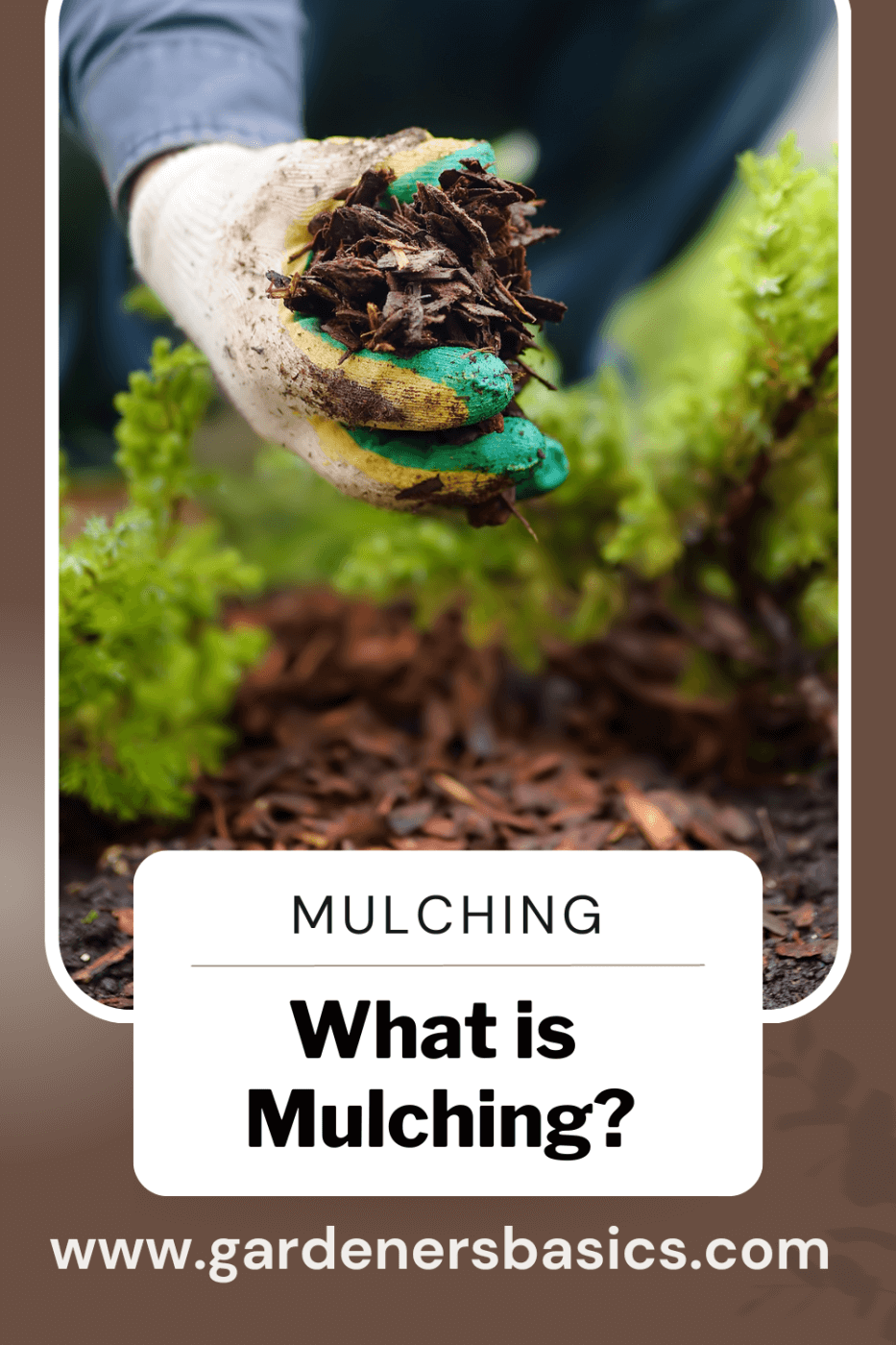 FAQ: What is Mulching in Gardening
FAQ: What is Mulching in Gardening
1. What is mulching?
Mulching covers the soil surface with organic or inorganic material to protect and improve the soil. It is commonly used in gardening and agriculture to conserve moisture, suppress weeds, regulate soil temperature, and enhance soil fertility.
2. What materials can be used for mulching?
Common organic mulching materials include straw, grass clippings, leaves, wood chips, sawdust, pine needles, and compost. Inorganic mulches can be made of gravel, pebbles, plastic, or landscape fabric.
3. What are the benefits of mulching?
Mulching offers several benefits to your garden, such as:
- Conserving soil moisture by reducing evaporation
- Regulating soil temperature by insulating it from extreme heat and cold
- Suppressing weed growth by blocking sunlight
- Enhancing soil fertility as organic mulches break down over time
- Reducing soil erosion and compaction
- Improving the appearance of your garden
4. How thick should the mulch layer be?
The recommended thickness for a mulch layer depends on the material used. Generally, a 2-4 inch (5-10 cm) layer of organic mulch is sufficient for most gardens. Inorganic mulches, like gravel or pebbles, may require a thicker layer to be effective.
5. When is the best time to apply mulch?
Mulch can be applied at any time during the growing season. However, the ideal time to apply mulch is in late spring or early summer when soil temperatures have warmed up, and plants are actively growing. Mulching too early can delay soil warming and hinder plant growth.
6. Can I use mulch around all types of plants?
Mulching is generally beneficial for most plants. However, certain plants, such as alpine plants and some succulents, may not thrive with a thick layer of mulch around them, as it can retain too much moisture and cause root rot. Always research the specific needs of your plants before applying mulch.
7. Are there any downsides to mulching?
While mulching provides numerous benefits, there can be some downsides:
- Organic mulches can attract pests like rodents, insects, and slugs.
- Poorly decomposed organic mulches can temporarily tie up nitrogen in the soil, potentially affecting plant growth.
- Inorganic mulches, like plastic and landscape fabric, can inhibit water and air movement in the soil and may need to be replaced more frequently.
To avoid these issues, use high-quality mulch materials and follow proper mulching techniques for your specific plants and garden conditions.





 FAQ: What is Mulching in Gardening
FAQ: What is Mulching in Gardening


